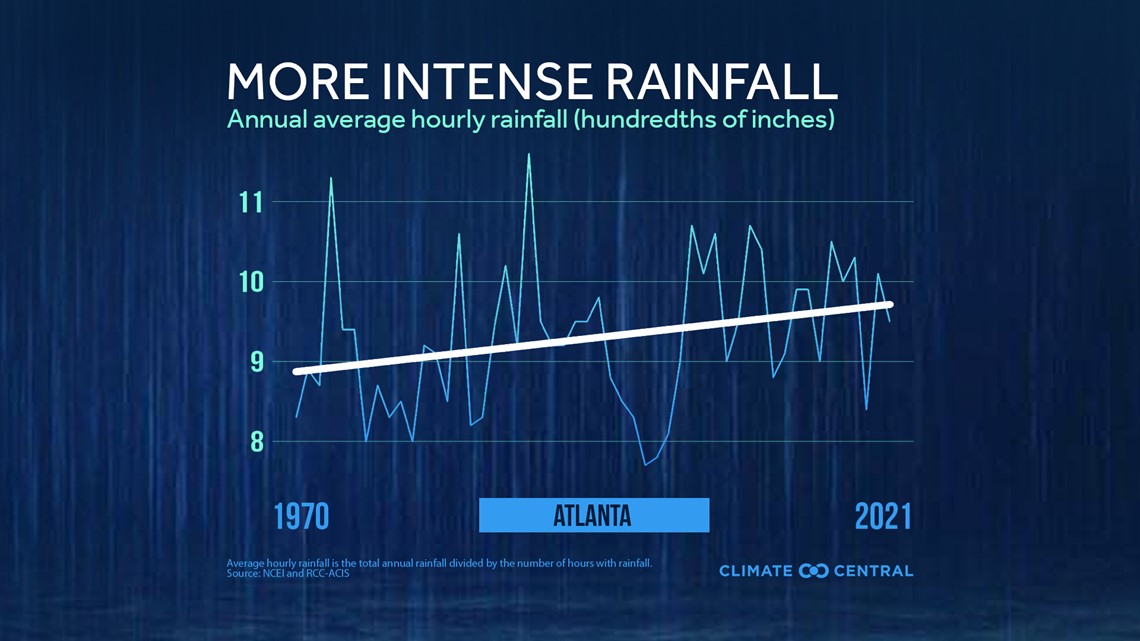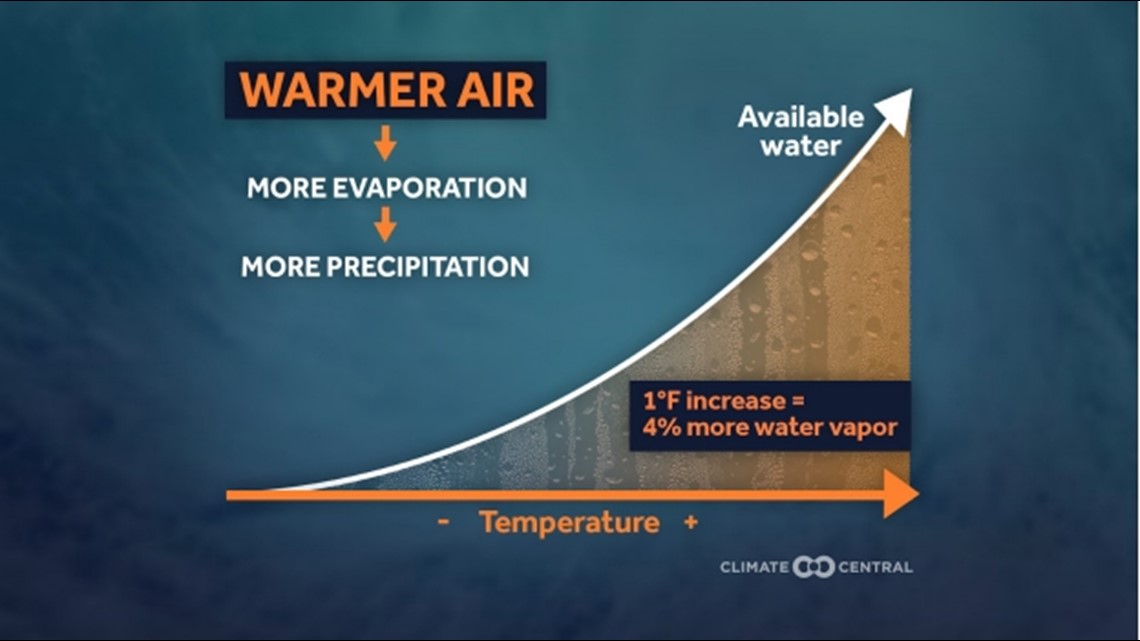ATLANTA — A warmer climate is leading to heavier rain events in Atlanta and across the United States, a new report from the nonprofit journalism group Climate Central shows.
In the report, a team of scientists examined 150 cities around the United States from 1970 through 2021, focusing on extreme rainfall. By calculating hourly rainfall intensity during rain-receiving days, they were able to quantify an increase in short bursts of extreme rainfall over the 51 years.
The report found that 90% of the 150 cities now average more rain-per-hour than when the data set began in 1970. More moisture in warmer air increases the chances of rain falling in heavier downpours.
The average increase in hourly rain intensity of the stations was 13 percent, but some cities showed an increase much higher. Fairbanks, Alaska, held the highest hourly rain rate increase of 49%.
Atlanta has had a 9.58% increase in hourly rain rates since 1970. This is modest, yet the notable increase also aligns with several other cities in the southeast.


Even a moderate increase in hourly rain rates and rainfall intensity can lead to many threats, including flash flooding and mudslides, along with health issues such as contamination of drinking water during heavy rain events.
RELATED: Severe Weather and Flood Safety Tips
North Georgia Flood Risks and Threats
Heavy rain events in Atlanta can take place year-round and from various weather systems. Flash flooding is not uncommon in North Georgia in the summer months, like slow-moving pop-up thunderstorms. And sometimes, landfalling tropical systems also bring significant flash flood threats.
RELATED: Cobb County firefighters evacuate more than 20 kids, 4 adults after flooding at daycare center
A flash flood is a sudden rise in water along a stream, river or area that is usually land. They can occur within several minutes or hours, and the water can move at surprisingly quick speeds. They are dangerous. Flooding is the #2 weather-related killer in the United States behind heat, according to 30 years of data from 1990 to 2020.
North Georgia's topography includes many hills, valleys and mountains. This topography and our network of creeks, streams and smaller waterways make many locations more prone to flash flooding.
In flash flooding, roads and bridges can become compromised, and the waters can hide other lurking hazards like live wires and chemical contamination. It only takes six inches of swiftly moving water to knock you off your feet, and just a foot of fast-moving floodwaters can float away a small car.
Climate Change is 'Supercharging The Water Cycle'
In the study, Climate Central highlights its methodology of calculating the Simple Hourly Rainfall Intensity Index, the total annual rainfall divided by the total number of hours with rainfall in a year. They looked at days when it rained in each city and how heavy it rained at the time.
A warmer atmosphere can hold more water vapor. An atmosphere just one degree Fahrenheit of warming can hold four percent more water vapor. This is known as the Clausius-Clapeyron Equation. As our atmosphere continues warming, extreme rainfall events will become more common.


Climate Central is a nonprofit, independent organization of scientists and journalists researching and reporting the facts about the Earth's changing climate and its impact on the public.

